40 At 40: A Look At Pioneering IT Companies Founded In 1982 And Before
As part of CRN’s 40th anniversary this year, here’s a look at 40 companies across the IT industry that have been around as long as CRN – and in many cases much longer.
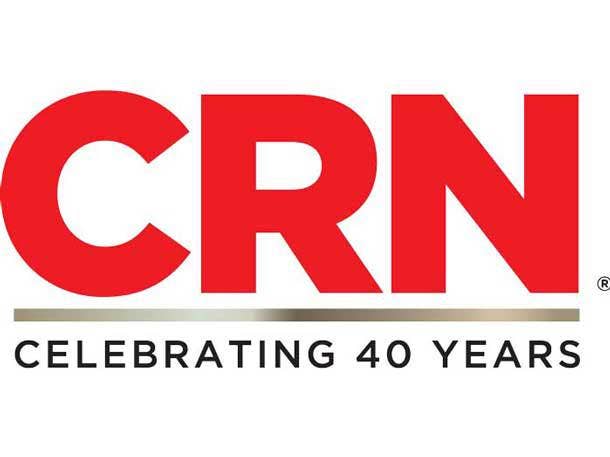
Historical Highlights
“Apple Again Reverses Dealer-Pricing Plan,” says a headline on a Nov. 29, 1982, cover of Computer Retail News, the predecessor to today’s CRN. Other headlines in the issue include “ComputerLand Connecticut Beats IBM On Massive Personal Computer Pact,” and “Ex-Commodore VP In Venture With Mass-Merchandise Chain.”
The main photo on the front page shows a ribbon cutting ceremony at the opening of a Businessland store in San Jose, Calif. – the first of what was expected to be a national chain.
This year CRN, CRN.com and The Channel Company are celebrating the 40th anniversary of CRNas the voice of the channel. And the above stories from an edition that first year, chronicling the early days of the PC reseller boom, show how much the IT industry has changed – including the IT vendors, distributors and solution providers that make up the industry today.
As part of the 40th anniversary observance, we’re taking a look at 40 IT industry companies whose histories stretch back as long as CRN has been covering the industry and the channel – and in many cases longer.
Many of the companies on this list began decades ago, often as part of other companies and in some cases within industries that pre-date IT. Identifying a specific “born on” date for a company can be a bit subjective given complex histories that include mergers, acquisitions, divestitures and name changes. Some companies have official start dates less than 40 years in their current form, but their heritages go back much further. These companies, through evolutions and acquisitions, have become the leading businesses we know today.
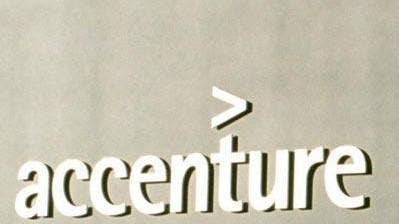
Accenture
IT services and systems integrator Accenture was officially created in 1989 and launched as a separate company in 2000. But its roots go back much further as the Administrative Services operation within Arthur Andersen, one of the “Big Five” accounting firms in the 20th Century that was founded in 1913.
In 1989 Administrative Services became Andersen Consulting, a separate business unit providing management and technology consulting services, according to a company timeline. The unit split off as an independent business in 2000 and adopted the Accenture name effective Jan. 1, 2001.
Accenture today is the largest company on the CRN Solution Provider 500, a global systems integration and IT services giant with 674,000 employees and revenue of $50.5 billion in fiscal 2021. Accenture’s leading capabilities are in digital, cloud and cybersecurity technologies offering strategy and consulting, interactive, IT and operations services.
The company has expanded the range of its service offerings through an aggressive acquisition strategy that has seen Accenture buy more than 50 companies over just the last 18 months. The acquisitions include consulting firms in geographic regions, vertical industries and specific IT segments such as data analytics, AI, cloud and digital transformation.
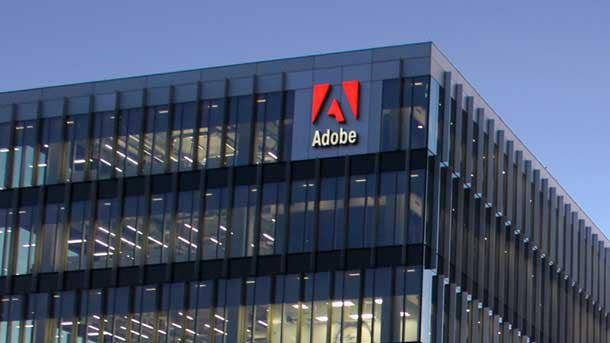
Adobe
In 1982 Xerox PARC employees John Warnock and Charles Geschke founded Adobe Systems, a computer graphics and publishing software company initially focused on developing and selling the PostScript page description language. PostScript made it easier to print text and images from a computer, according to Warnock’s Wikipedia biography, helping fuel the PC explosion of the 1980s.
In the decades since Adobe has developed other ground-breaking products such as Illustrator, Photoshop, and Acrobat – the latter based on the company’s ubiquitous Portable Document Format (PDF).
Today Adobe develops and markets a range of document management, multimedia, creativity, marketing and digital experience software – many bundled into its popular Creative Cloud set of applications and services.
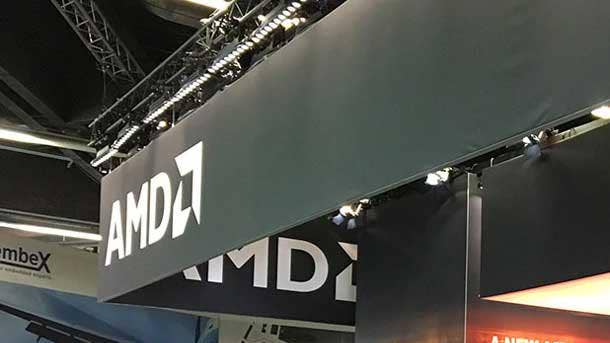
AMD
Advanced Micro Devices was founded in 1969 by Walter Jeremiah (“Jerry”) Sanders, a former executive at computer chip pioneer Fairchild Semiconductor, and seven others, according to Britannica. The company was initially a second-source manufacturer of other company’s computer chips – including Intel, which would in time become AMD’s chief rival.
After years of operating in Intel’s shadow, AMD has emerged in recent years as a major competitor to Intel, Nvidia and other semiconductor makers with its high-performance CPU and GPU products that power data center systems, desktop PCs and other devices.
AMD just wrapped up its $49 billion acquisition of FPGA chip maker Xilinx, the largest acquisition in the history of the semiconductor in industry – a move that’s expected to expand AMD’s market reach.
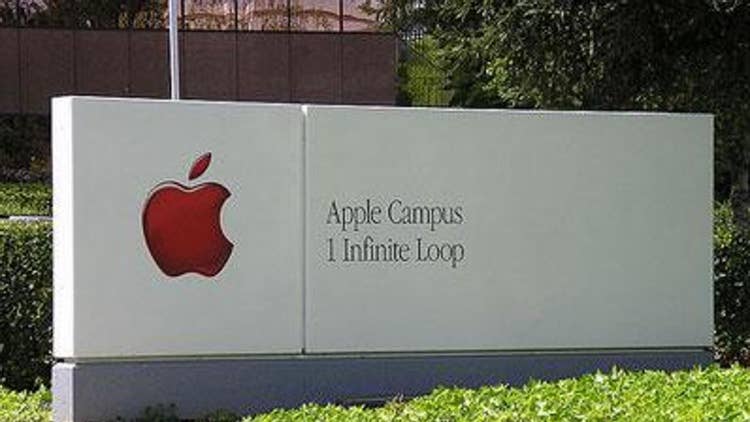
Apple
Apple was famously started in 1976 by Steve Jobs and Steve Wozniak who, determined to offer a more user-friendly personal computer for consumers, developed the Apple 1 computer in Jobs’ garage in Los Altos, California. The ground-breaking Apple II, launched in 1977, became one of the first successful mass-produced microcomputers, according to Wikipedia.
Apple’s history, including Jobs’ 1985 departure from the company, his 1997 return and his death in 2011 due to pancreatic cancer, are well known. Also well know is Apple’s 2007 debut of the iPhone, one of the most ground-breaking products in IT industry history.
Today, Apple has a $2.7 trillion market cap and reported fiscal 2021 revenue of $366 billion, fueled by sales of the iconic iPhone, MacBook computers, iPad tablets, Apple Watches – and the Apple TV+ streaming service.
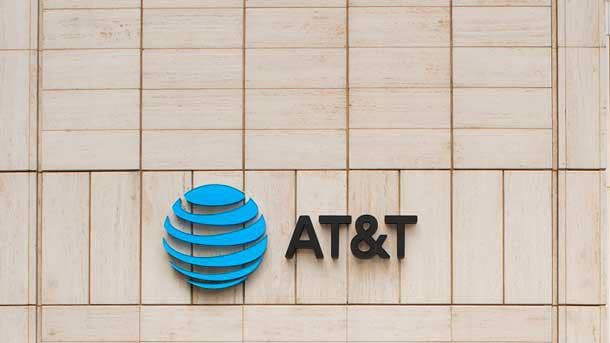
AT&T
Telecommunications and cable giant AT&T officially incorporated in 1983 in its current form, making it one year shy of 40. But the company’s roots go back to its 1885 creation as a subsidiary of the Bell Telephone Company, the business founded by Alexander Graham Bell in 1877.
While AT&T operated as a monopoly for much of those nearly 100 years, it was split into seven regional companies in 1984 as part of a settlement of a civil antitrust lawsuit brought by the U.S. Justice Department. AT&T itself retained Bell Labs, the Western Electric telephone equipment manufacturer, and a long-distance service, according to a CNN Money history.
AT&T has since undergone several restructurings, including selling off the Lucent equipment business, buying media and entertainment giant Time Warner in 2018, and now executing a $43 billion spinoff of WarnerMedia. All while remaining one of the largest wireless and Internet service providers.
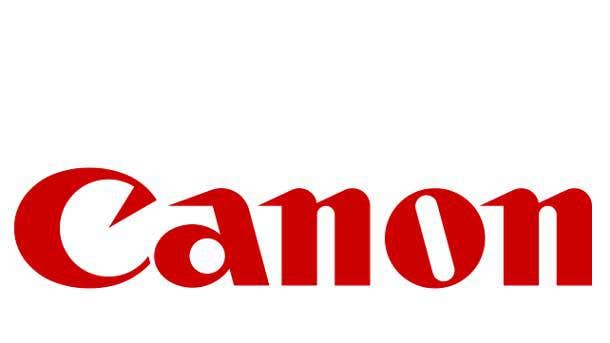
Canon
Canon’s predecessor, Precision Optical Instruments Laboratory, was founded in Tokyo in 1933 to perform research for high-quality cameras, according to a company history on Canon’s web site. That became the Precision Optical Industry, Co. in 1937 and Canon Camera Co. (“Canon” was the trademarked name of one of its cameras) in 1947.
In the 1960s the company began expanding into the office equipment market with an electronic calculator and a copying machine – the Canofax 1000 – and then into office computers and laser printers in the 1970s.
Today the Japanese multi-national corporation manufactures and markets a range of optical, imaging and industrial products including semiconductor manufacturing equipment and medical systems. But the company (and its Canon U.S.A. subsidiary) are best known in the channel for its printers, copiers, scanners and other office equipment.
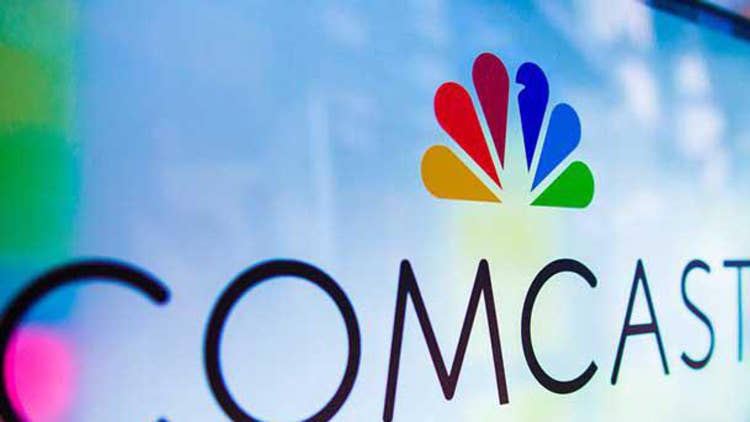
Comcast
Comcast was founded in 1963 as a single-system cable operator in Tupelo, Miss., boasting 1,200 subscribers, according to a Comcast timeline on the company’s website.
Today Comcast is one of the nation’s largest providers of high-speed Internet, phone, wireless, cloud and cybersecurity services for businesses (as well as Internet, cable and WiFi services for consumers).
Comcast strengthened its hand in the fast-growing SD-WAN space with its 2021 acquisition of hybrid networking specialist Masergy Communications.
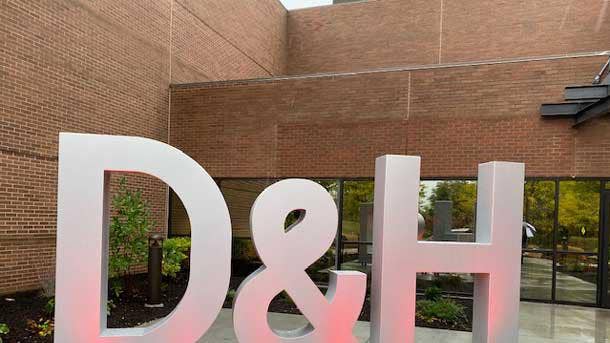
D&H Distributing
D&H Distributing got its start in 1918 in Williamsport, Pa., founded by brothers-in-law David Schwab and Harry Spector, as Economy Tire and Rubber, a tire retreading company, according to CRN stories in 2018 highlighting the company’s 100th anniversary.
Within a few years the company began selling auto parts wholesale and in 1926 added crystal radios through a deal with Philco. The company expanded to other consumer appliances and became D&H Distributing in 1929, according to Wikipedia.
In 1973 D&H created its Electronics Specialty Products Division and in the late 1970s created the Computer Products Division, initially distributing products from such companies as Texas Instruments, Packard Bell, Commodore Computers and Panasonic Printers. Between 2000 and 2006 D&H added products from major IT vendors as Microsoft, Cisco Systems and Lenovo to its line card.
D&H today is a leading distributor of IT solutions including servers and storage systems, networking solutions, audio-visual systems, video surveillance technologies, small office/home office solutions, digital imaging systems, and mobility and consumer electronics products.
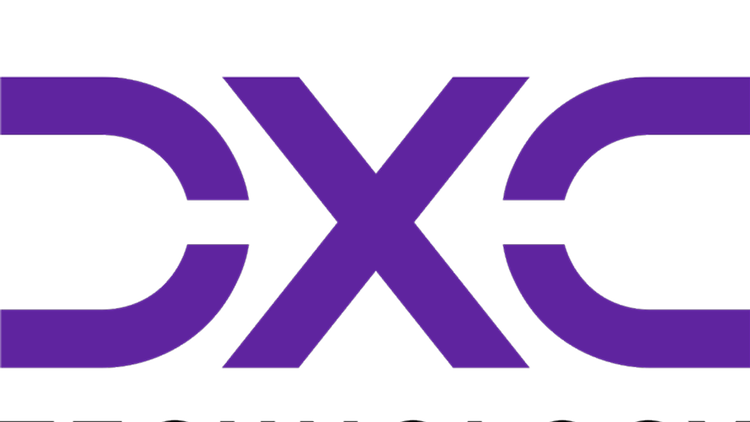
DXC Technology
DXC Technology was launched in April 2017, making the current iteration of the global IT services provider only five years old. But DXC’s history goes back much further. The company was created through the merger of Hewlett Packard Enterprise’s IT services business and Computer Sciences Corp., a leading IT services provider for commercial and government clients that was founded in 1959.
Today DXC is a leading systems integrator, IT service and solution provider with offerings in cloud, applications, data analytics, security, IT outsourcing and modern workplace management. DXC, No. 4 on the CRN Solution Provider 500, reported $17.7 billion in revenue for fiscal 2021.
DXC’s growth strategy is to increasingly run its customers’ mission-critical systems via its Global Infrastructure Services (GIS) business. The company has been selling off assets and lines of business that the company considers non-strategic to its core business.
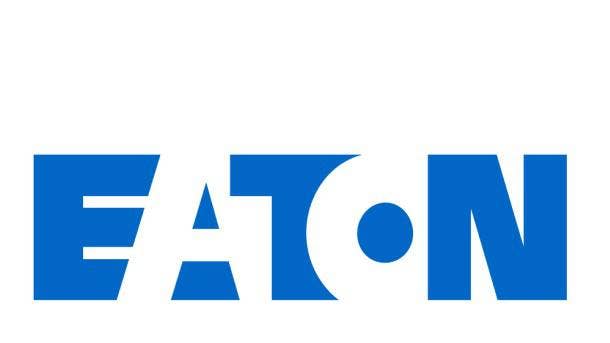
Eaton
Eaton got its start in 1911 when founder Joseph Eaton invested in “the very first gear-driven truck axle,” according to Eaton’s web site, and incorporated as the Torbensen Gear and Axle Co. in Bloomfield, N.J. Eventually the company expanded into other segments of the automotive industry, changed its name to Eaton Manufacturing Co. and, in 1971, to Eaton Corp.
Today the diversified company, based in Dublin, Ireland, has businesses in the aerospace, vehicle and electrical sectors – the latter including the UPS, switchgear, busway, power distribution units and other products that are sold through the IT channel to support data centers and IT installations. Annual revenue in 2021 reached $19.6 billion.
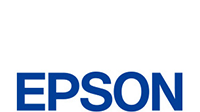
Epson Logo
Epson
Epson was founded in 1942 as Daiwa Kogyo Ltd. in Nagano, Japan, to manufacture watch parts for watchmaker Daini Seiko, according to a company history. Eventually part of Daini Seiko and Daiwa Kogyo merged to form Suwa Seikosha Co. Ltd., the forerunner of today’s Seiko Epson Corp.
While watches and clocks remained the company’s focus for years, in September 1968 the company developed the EP-101, described as “the world’s first miniprinter.” When the company followed that up in 1975 with the next generation of printers based on the EP-101, they were called Epson for “Son of Electronic Printer.” It would become the company’s name in 1982.
The company has fielded a range of products over the years including projectors, cameras, Android-based smart glasses and even the world’s first television watch. (The company introduced its own PC line in 1983, but withdrew from the market in 1996, according to a Wikipedia post). But in the channel the Epson name is most known for its broad portfolio of printers for consumers and businesses.
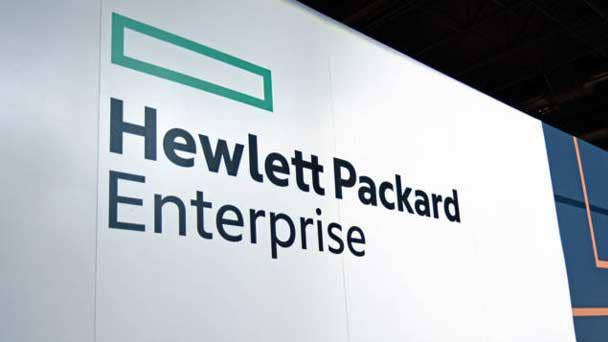
Hewlett Packard Enterprise
Stanford University graduate students Bill Hewlett and David Packard founded the Hewlett-Packard Co. in 1939 and began developing electronic test and measurement equipment in a Palo Alto, Calif., garage that many consider the birthplace of Silicon Valley. (The company’s first big contract was from Walt Disney for audio oscillators used for the production of the film “Fantasia.”)
The company has been a major player in the IT industry – and the channel – ever since with its personal computers, servers, storage hardware, networking gear, software and other IT offerings. (The test and measurement business was spun off in 1999 as Agilent Technologies.)
In October 2014 Hewlett-Packard announced a plan to split into two companies: Hewlett Packard Enterprise with the company’s enterprise computing business and HP Inc. with the PC and printer business, each with more than $50 billion in annual sales. (The split was completed in November 2015.)
Hewlett Packard Enterprise, which in 2020 announced that it was moving its headquarters to Houston, continues to offer a broad range of IT systems and services spanning compute, data storage, networking (including its $3 billion acquisition of Aruba Networks in 2015 and $925 million purchase of SD-WAN vendor Silver Peak in 2020), software and cloud services.
HPE has been a pioneer in the transition to providing IT as a pay-as-you-go service with its HPE GreenLake edge-to-cloud infrastructure-as-a-service offering.
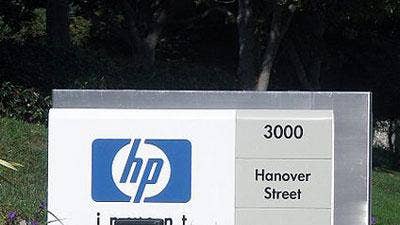
HP Inc.
As described in the earlier Hewlett Packard Enterprise history, HP Inc.’s roots go back to the 1939 creation of the Hewlett-Packard Co. in Palo Alto, Calif. HP Inc. was spun off as an independent company in 2015, taking over the Hewlett-Packard PC and printer businesses.
Today HP remains a leader in the highly competitive global PC market, battling rivals Dell Technologies and Lenovo for market leadership. In the fourth quarter of 2021 HP shipped 5.36 million PCs in the U.S., accounting for 25.6 percent of the U.S. market.
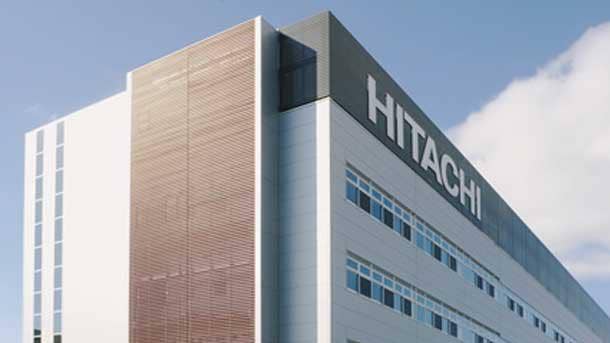
Hitachi
Japanese multinational conglomerate Hitachi was founded in 1910 by electrical engineer Namihei Odaira who developed Japan’s first 4-kilowatt induction motor for use in copper mining operations, according to the origin story on the company’s web site. The company’s name comes from superimposing the kanji characters “hi” meaning sun and “tachi” meaning rise, according to Wikipedia.
Throughout its history Hitachi has competed with products and services in a wide range of industries including IT, energy, manufacturing, transportation and automotive. In the IT arena the company is most widely known for its data storage technologies including network-attached storage and flash storage.
Today the company’s Hitachi Vantara business delivers IT solutions and services including data storage, converged and hyperconverged infrastructure, and IT operations management. Hitachi Vantara also provides the Lumada line of data management and analytics and IoT applications.
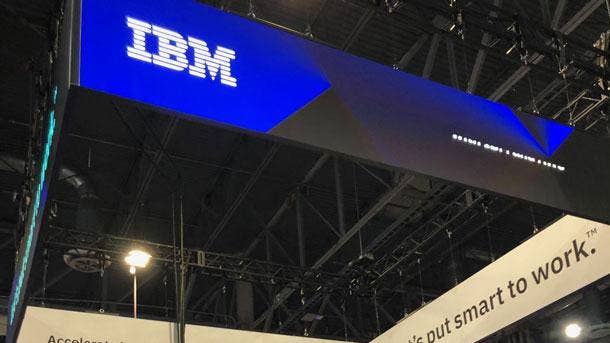
IBM
Entire books have been written about the history IBM, perhaps the best known and most iconic company in the IT industry. IBM’s forerunner, the Computing-Tabulating-Recording Company, was created in 1911 through the merger of three companies that had existed since the late 1800s, according to an IBM history on thestreet.com.
But it was 1924 when Thomas Watson became the C-T-R Company’s top executive and renamed it International Business Machines that marked the real beginning of the company we know today. IBM set the pace for IT innovation early on, developing many of the core technologies that powered computers for much of the Twentieth Century. The company’s punch card system, for example, was adopted by the newly created Social Security Administration in the 1930s to build the country’s Social Security numbers system.
In 1943 IBM developed the first completely electronic computing machine, the Vacuum Tube Multiplier, and under Thomas Watson Jr. the company dominated the computer mainframe business through the 1950s, 1960s and 1970s. And while IBM wasn’t the first to market with a personal computer, the IBM Personal Computer 5150 that launched in 1981 was the catalyst for what would become a huge industry in itself.
IBM’s trajectory has been more uneven in the last 30-plus years. The company particularly struggled in the late 1980s and early 1990s, including losing $8 billion in 1993, as it sought to keep up with changing IT. IBM has become more services-focused (it sold its PC business in 2005 and its x86-based server business in 2014 – both to Chinese IT manufacturer Lenovo.)
Today IBM, under the direction of CEO Arvind Krishna, is transforming itself to focus on hybrid cloud, digital transformation, AI and other leading-edge products and services. In late 2021 the company spun off its managed infrastructure business as Kyndryl.
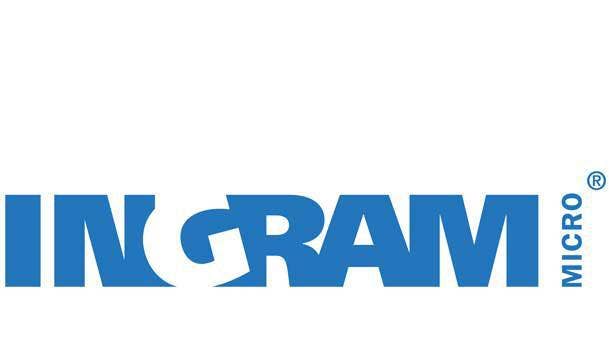
Ingram Micro
The Ingram Micro distributor of today has its roots in multiple predecessors including IT distributor Micro D, founded in 1979, and Software Distribution Services, founded in 1982. Ingram Distribution Group, a unit of Ingram Industries founded in 1978, acquired Software Distribution Services in 1985 and renamed it Ingram Software (and renamed it again in 1988 to Ingram Computer), according to a company history.
Ingram acquired Micro D in 1989 and the combined company was renamed Ingram Micro D and based in Santa Ana, Calif. (The “D” was dropped in 1991.)
Ingram Micro grew rapidly in the U.S. and in global markets, aided by a series of strategic acquisitions, and became the world’s largest IT distributor in 1998. In July 2021 Ingram Micro was acquired by Platinum Equity for $7.2 billion, ending four years of ownership by Chinese conglomerate HNA Group.
Ingram Micro today is a key player in the IT channel, working with more than 1,600 vendors and 170,000 customers including VARs and solution providers. The distributor operates in 160 countries and has $49 billion in annual revenue.
The recent merger of Tech Data and Synnex created what is now the world’s largest IT distributor, knocking Ingram Micro from the No. 1 position it held for years.
Other leading electronics distributors also have lengthy histories in the IT industry that go back more than 40 years. Avnet was founded in 1921 by Charles Avnet to sell surplus radio parts, for example, while Arrow Electronics got its start in 1935 as the Arrow Radio retail store in lower Manhattan’s “Radio Row” to sell used radios and radio parts to consumers.
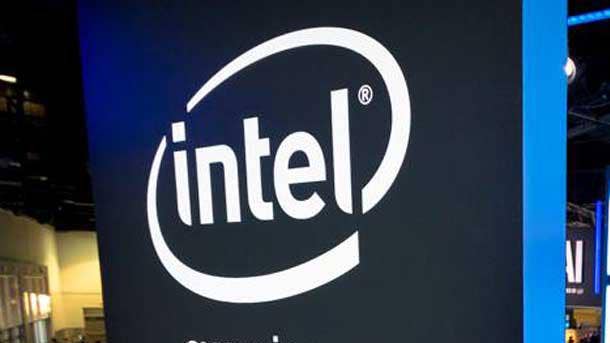
Intel
Semiconductor designer and manufacturer Intel is one of the most iconic companies in Silicon Valley and in the IT industry overall. The company was founded in 1968 by Robert Noyce, co-inventor of the integrated circuit, and Gordon Moore, Noyce’s colleague from Fairchild Semiconductor.
The original focus of Intel (short for “integrated electronics,” according to the Silicon Valley Historical Association) was on making semiconductor memory more practical and affordable. In 1980 IBM chose Intel’s 8080 chip as the central processor for IBM’s first personal computer, establishing Intel’s CPUs as the standard for desktop computing and fueling the company’s growth – and unquestioned market leadership – for many years.
Intel today faces stiff competition from long-time rival AMD and newer companies like Nvidia. Pat Gelsinger, who just finished his first year as CEO, has taken steps to restore Intel’s leadership position in the semiconductor industry. He has implemented a “software-first” approach to product development, embraced Arm and RISC-V chip architectures, reorganized the company’s business units, adopted a hybrid manufacturing strategy, and expanded foundry capacity (including striking a $5.4 billion deal to buy Israeli chipmaker Tower Semiconductor).
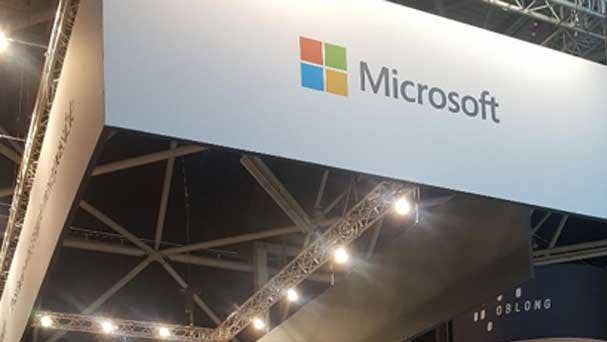
Microsoft
Microsoft is another IT industry icon whose genesis is well known. In 1975 boyhood friends Bill Gates and Paul Allen started Microsoft after they converted the BASIC mainframe programming language for use on the Altair, an early PC, according to Britannica.com.
Microsoft’s big break came in 1980 when IBM asked the company to develop the operating system for IBM’s first PC, establishing MS-DOS as the standard for the PC industry. From there the company expanded into desktop applications including Word and Excel. In 1990 Microsoft released the first version of Windows, the operating system with a graphical user interface.
Through the late 1990s and early 21st Century Microsoft was one of the most profitable and most powerful companies in the industry. Today, despite setbacks in some market segments such as mobile phones, Microsoft remains one of the industry’s leaders with its Azure cloud platform and cloud applications, Surface laptops, desktop software and Xbox gaming systems.
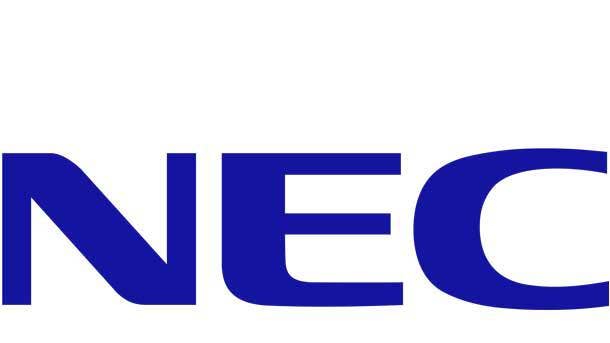
NEC
NEC is another Japanese company with a lengthy history that predates the information technology industry. The Nippon Electric Company was founded in July 1899 as a joint venture with the Western Electric Co. of the U.S. to manufacture telephones and switches and, later, cables and radio broadcasting equipment, according to a company history. In 1939 NEC demonstrated prototype television sets.
The company began research and development work on transistors in 1950, in computer technology in 1954, and began producing integrated circuits in 1960. Over the next several decades the company would expand to develop computer systems for businesses and “microcomputers” – including the 16-bit PC-9801, the company’s first personal computer, in 1982.
NEC’s product portfolio today includes servers and laptop computers, data storage systems, network and unified communications products, and business software.
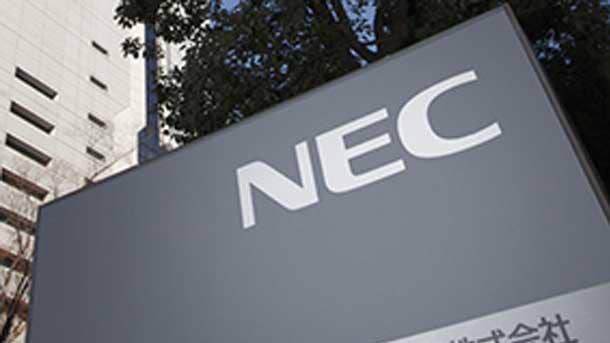
NortonLifeLock/Symantec
Cybersecurity technology and services provider NortonLifeLock has a complex history intertwined with Symantec and Peter Norton Utilities – both started in 1982.
Symantec shipped its first major product in 1985, a database program for the IBM PC called “Q&A,” according to companyhistories.com. Peter Norton Utilities, meanwhile, began selling Norton Utilities, a PC tool for retrieving erased data, in 1982 and Norton Editor, text editor application, in 1985.
Symantec made a series of acquisitions through the 1980s and bought Peter Norton Computing in 1990. Through the 1990s and 2000s Symantec would become a leading provider of consumer antivirus and data management utilities under the Norton brand. Symantec acquired Verisign in 2009 and identity theft protection provider LifeLock in 2019, becoming a major player in the cybersecurity arena.
In 2019 semiconductor and infrastructure software giant Broadcom acquired Symantec’s enterprise software business, including its corporate security technology, which continues to operate as the Symantec Enterprise division of Broadcom.
NortonLifeLock, meanwhile, spun off and relocated to LifeLock’s Tempe, Ariz., headquarters, according to Wikipedia. Today the company provides consumer cybersecurity software and services including Norton 360 (device security, secure VPN and cloud backup), Avira security for MacOS and the LifeLock identity theft protection services.
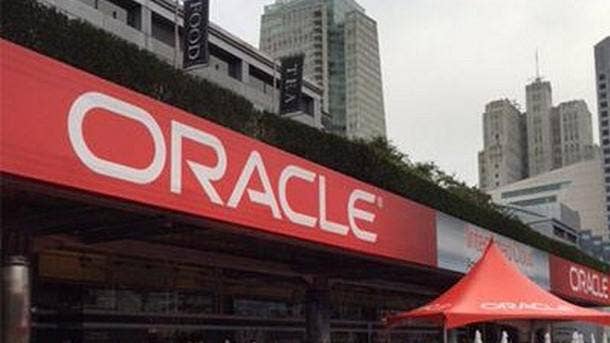
Oracle
Oracle was started in 1977 by Larry Ellison, then a programmer at electronics company Ampex Corp., along with Bob Miner and Ed Oates, two other Ampex employees. Inspired by a research paper on relational data management written by English computer scientist Edgar Codd, the trio developed commercial database software that could organize large amounts of data and – using Structured Query Language (SQL) – quickly retrieve that data, according to a Britannica history of the company.
Oracle was initially named Software Development Laboratories and then, from 1979 to 1982, Relational Software Inc. The name was changed to Oracle Systems Corp. in 1982 to align with the name of its Oracle Database product – which originated from the codename of a CIA development project Ellison worked on earlier.
The Oracle Database was a hit – its first customer was the U.S. Air Force, which used the software at Wright-Patterson Air Force Base in Ohio. Today the Oracle Database is one of the most widely used databases and it’s a critical IT system component for many of the world’s largest businesses.
Oracle Corp. (“Systems” was dropped from the name in 1995, according to a Wikipedia entry) is one of the IT industry’s leading companies today with Ellison serving as chairman and chief technology officer. (Ellison, who relinquished the CEO role in 2014, retains a 42 percent stake in Oracle and, according to Business Insider, was the world’s fifth richest man at the end of 2021.)
While the database system remains Oracle’s flagship product, the company has expanded into a broad range of products and services including data center and cloud infrastructure and corporate applications. Much of that expansion has come through a series of multi-billion-dollar acquisitions over the years including PeopleSoft (2005), BEA (2008), Sun Microsystems (2010) and NetSuite (2016).
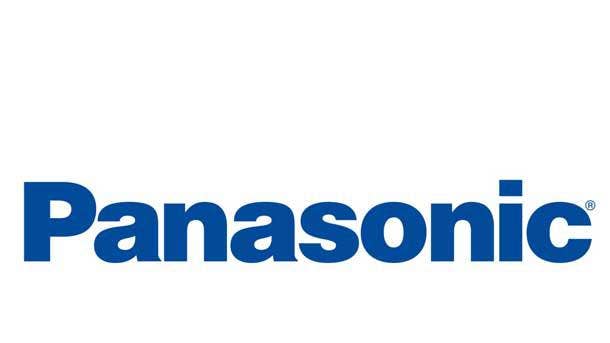
Panasonic
Japanese conglomerate Panasonic got its start in 1918 as Matsushita Electric Housewares Manufacturing Works, assembling fan insulator plates and, later, attachment plugs and two-way light bulb sockets. From there the company expanded into bicycle lamps, electric irons, and other electrical components and appliances, according to a company history and a Wikipedia entry.
After the Second World War the company began manufacturing televisions, blenders, microwave ovens, stereo systems and other consumer goods under different brand names including National. But because that name could not be used in the U.S., the company created the Panasonic brand for its products sold in America.
In 2008 the company’s global name was changed from Matsushita Electric Industrial Co. to Panasonic Corp.
While the Panasonic name may be best known in the consumer electronics realm today, the company markets laptop and tablet computers, including the popular Toughbook line of rugged laptops and handheld computers. The Panasonic product portfolio also includes audio-visual solutions, digital signage products and professional displays.
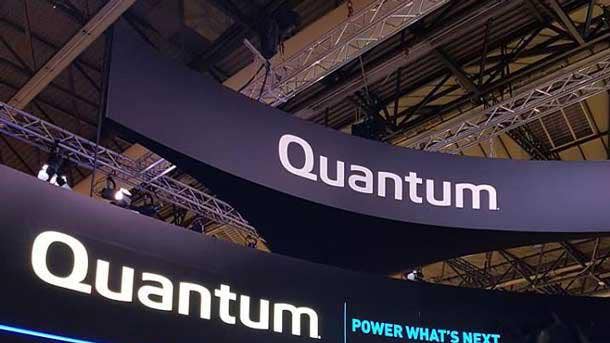
Quantum
Quantum Corp. was founded in 1980 when executives from Shugart Associates (later Seagate Technology), IBM and Memorex designed an 8-inch hard drive for data storage tasks, according to a company press release issued in 2020 when the celebrated its 40 years of business. But the company’s real success came in developing 5.25-inch hard disk drives, a market the company led in the mid-1980s.
Quantum sold its hard drive business to Maxtor in 2001 and today the company’s focus is on providing tape storage systems, backup appliances, a digital media asset management system, and software and appliances for file, block and object storage.
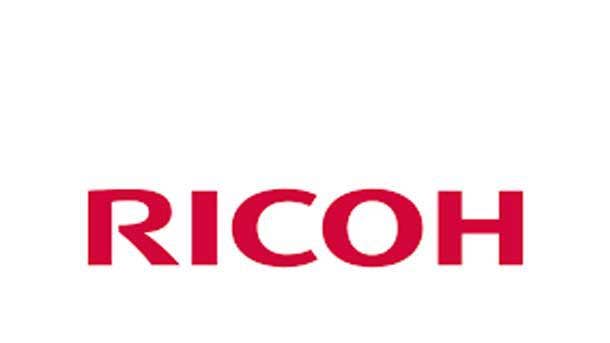
Ricoh
Japanese multinational imaging and electronics company Ricoh began in 1936 as Riken Kankoshi Co., the sensitized paper division split off from Rikagaku Kogyo, according to a company history. The company changed its name to Riken Optical Co. in 1938 and adopted the Ricoh Co. name in 1963.
While the company has manufactured products as diverse as cameras and watches, Ricoh’s focus throughout its history has largely been on copiers, printers and other office automation products. Those include the Ricopy BS-1 electrostatic copier in 1965, the RICOM 8 office computer in 1971 and the RIFAX 600S fax machine in 1973.
More recently Ricoh, including its Ricoh USA subsidiary, has been expanding into information management and digital services including managed print and document outsourcing, cloud and IT infrastructure services, business process automation, and remote/hybrid work collaboration and communications.
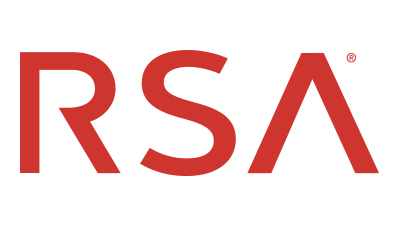
RSA
RSA Data Security was founded in 1982 by MIT colleagues Ron Rivest, Adi Shamir and Leonard Adleman who, five years earlier, had developed the public-key cryptography method for securing network communications. The company’s name came from the first letter of their last names, according to a National Inventors Hall of Fame entry for Shamir.
The public-key method, used to safeguard electronic transaction data, has proven instrumental to the growth of the internet and e-commerce.
RSA was acquired by EMC Corp. in 2006 and became part of Dell Technologies in 2016 after Dell’s acquisition of EMC. RSA was sold to a consortium of private investors, led by Symphony Technology Group, in 2020.
RSA today is a leading provider of cybersecurity and digital risk management software including SecurID and Outseer for identity and access management, Netwitness for threat detection and response, and Archer for integrated risk management.
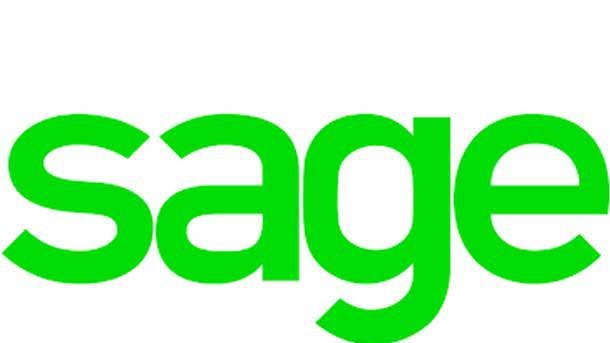
Sage
Sage Group is a British multinational software company founded in 1981. The company was initially created to sell accounting software developed by Graham Wylie, one of Sage’s founders. In 1984 Sage began selling software for the Amstrad PCW word processor, according to a company history on Wikipedia.
Sage today markets a broad range of software applications for accounting, finance and payroll; construction and real estate; and ERP, human resource and business management – with a particular focus on small and mid-size businesses.
Sage acquired accounting software developer Intacct in 2017 for $850 million in a move that expanded Sage’s offerings in cloud financial management applications.

Samsung
Founder Lee Byung-chul started Samsung in 1938 as a grocery trading company in Taegu, South Korea, exporting local goods such as dried fish, vegetables and noodles, according to Britannica. (Samsung means “three stars” in Korean.) Today, the Samsung Group conglomerate operates multiple subsidiaries in electronics, heavy industry, construction and more, producing about 20 percent of South Korea’s total exports.
Samsung Electronics was started in 1969 and its first product was a black-and-white television set in the early 1970s. Today it is one of the world’s largest IT, consumer electronics and chip manufacturing companies, notes a Wikipedia entry on the company’s history.
Samsung’s most visible products are its Galaxy smartphones and Galaxy Tab tablet computers. The company also markets laptops, monitors, memory and data storage products. Samsung began producing semiconductors – particularly DRAM memory chips – in the early 1980s and is one of the world’s largest chip manufacturers today.
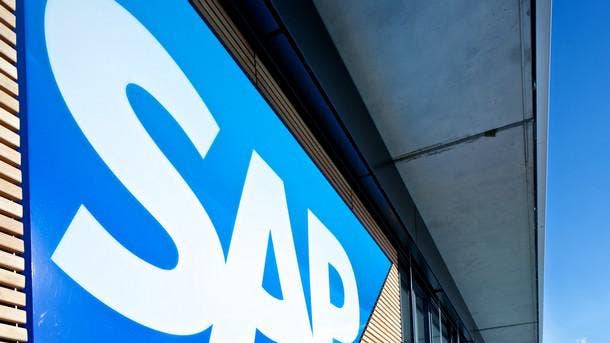
SAP
In April 1972 five former IBM employees in Germany founded SystemAnalyse Programmentwicklung (System Analysis Program Development) with the goal of creating standard enterprise software that integrated business processes and enabled real-time data processing, according to a company history.
By 1975 the company had developed applications for financial accounting, invoice verification and inventory management. In 1979 the company began offering R/2, the second generation of the company’s mainframe-based software. That was followed in 1992 by R/3, the comprehensive suite of client-server ERP (enterprise resource planning) applications that established SAP as a leading player in the enterprise software market.
Today SAP is one of the IT industry’s largest business software companies with about $31 billion in annual revenue (2021), 440,000 customers in 180 countries, and more than 107,000 employees. The company’s S/4HANA ERP platform, the successor to R/3, is the company’s flagship software supported by other products including the Business Technology Platform (with database, analytics, and application development and integration tools) and CRM/customer experience applications.
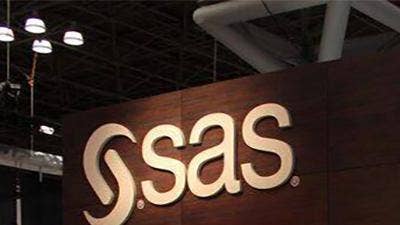
SAS
SAS grew out of a late-1960s project among Southern universities to develop a general-purpose statistical analysis system (hence “SAS”) for the schools’ agriculture departments, according to a company history. SAS was founded as a commercial business in 1976 by current CEO James Goodnight and three other project leaders from North Carolina State University, according to Wikipedia. The company’s first product was Base SAS that offered core statistical analysis capabilities.
Today the company’s broad product portfolio includes advanced analytics, AI and machine learning, data management, fraud and security intelligence, customer and market analysis, IoT and other software. SAS Viya is the company’s flagship analytic, AI and data management platform.
SAS, which has about $3 billion in annual sales, has remained privately held throughout its history with Goodnight owning about two-thirds of the company and co-founder John Sall owning about one-third. In 2021 the company announced a plan to go public by 2024.
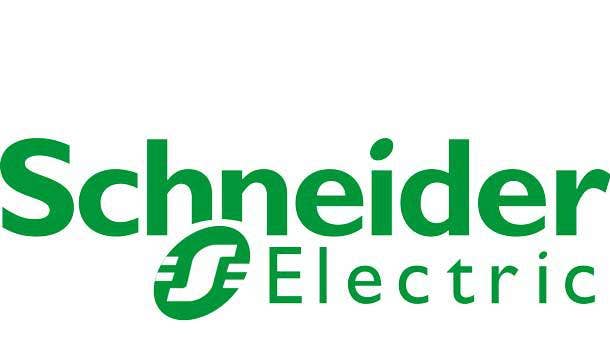
Schneider Electric
Schneider Electric’s roots go back nearly two centuries to Le Creusot, France, when bothers Adolphe and Joseph-Eugene Schneider took over an abandoned foundry in 1836 and began producing heavy machinery and transportation equipment under the name Schneider & Cie, according to a company history.
In the 1980s and 1990s Schneider Group moved away from steel and shipbuilding, renamed itself Schneider Electric and focused on the electrical industry through several strategic acquisitions including Telemecanique, Square D, Merlin Gerin and Lexel.
Today Schneider Electric’s focus is on uninterruptible power supply (UPS) and critical power protection systems, smart grid applications, building and industrial automation and control, and more.
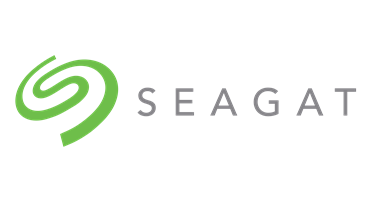
Seagate Technology
Seagate Technology was founded in 1978 with the idea of developing a 5.25-inch hard disk drive for storing data and the company began operations in 1979. (The company was originally named Shugart Technology for co-founder Alan Shugart but was soon changed to Seagate.)
The company’s first product was the ST-506, a 5 MB hard disk drive with an integrated floppy drive, quickly followed by the 10 MB ST-412. The products’ success helped then win a contract with IBM and that company’s first PC contained Seagate hard drives, according to a history on Successstory.com.
Seagate today develops a range of mass data storage technologies and products including hard disk and solid-state drives for internal and external use, and data storage systems for data center, cloud and edge systems that incorporate flash, hybrid and disk array technology. The company also provides cloud data storage and transfer services, gaming console storage and intelligent object storage software.
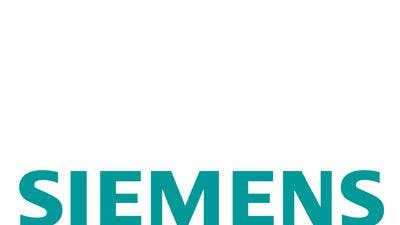
Siemens
The history of German multinational conglomerate Siemens AG, founded in 1847 in a Berlin workshop, follows much of industrial-technological civilization, notes a company history.
Today’s Siemens’ wide-ranging businesses include building management systems, drive technology, energy, industrial automation and transportation systems.
On the IT side Siemens develops software for a range of applications, not surprisingly with an emphasis on manufacturing and industry. Offerings include PLM (product lifecycle management) applications, manufacturing operations management softwar, industrial IoT applications, power distribution software, applications for production machines and plants, and mobile applications.
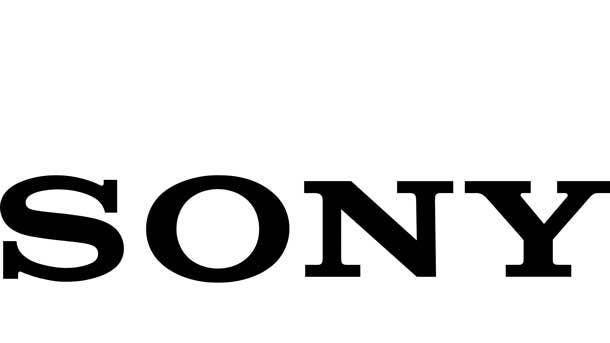
Sony
Sony Group got its start in 1946 as a radio repair shop, Tokyo Telecommunications Engineering Corp., in a bombed-out department store in Tokyo. Today the company is a multinational conglomerate and leading producer of audio and video electronics, according to a PBS history of the company and Sony’s own historical description.
The company received a license from Bell Labs in the early 1950s to build transistors and began producing a pocket radio. To help with international sales the company changed its name to Sony, a play on “sonus” – Latin for “sound.”
The company’s focus has remained on consumer electronics, such as the Betamax VCR in 1975, the Sony Walkman portable stereo cassette player in 1979 and the PlayStation video gaming system in 1994. The company exited the PC market in 2014 when it sold its VAIO PC business.
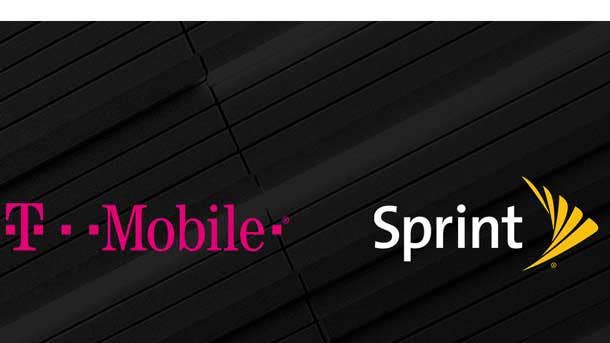
T-Mobile/Sprint
T-Mobile and Sprint, major players in the telecommunications and wireless arena, merged under the T-Mobile name in 2020 and the combination is now one of the industry’s leading wireless communications service providers.
The company has been aggressively expanding its 5G wireless services and recently launched new IoT connectivity services.
Sprint traces its origins to 1899 to the Brown Telephone Co., which was founded to provide telephone service to the rural area around Abilene, Kan. Sprint went through many changes, including merging with Nextel Communications in 2005
T-Mobile’s roots are in the 1994 establishment of VoiceStream Wireless PCS, a subsidiary of Western Wireless Corp. It took on the T-Mobile US name in 2001.
T-Mobile today is owned by German telecommunications giant Deutsche AG.
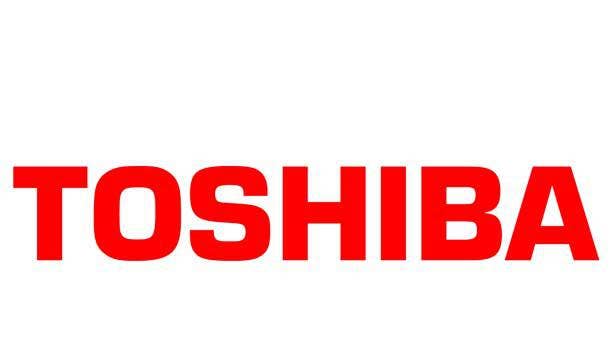
Toshiba/Dynabook
Toshiba can trace its roots back to 1875 with the founding of Tanaka Seisakusho (renamed Shibaura Seisakusho in 1904) as Japan’s first manufacturer of telegraph equipment. But the company’s founding is generally put at 1939 when that company merged with Tokyo Denki (Tokyo Electric), a producer of incandescent lamps and lightbulbs started in 1890, to create an electric equipment manufacturer called Tokyo Shibaura Denki (Tokyo Shibaura Electric Co.), according to a company history.
In the post-war years the company initially focused on heavy electrical machinery, but also returned to making smaller electrical products and consumer goods including Japan’s first color TV in 1960 and the first Japanese word processor in 1978.
Today the company, which adopted the Toshiba name (an abbreviation of Tokyo Shibaura Denki) in 1984, develops a broad line of products in electronic devices, semiconductors, data storage, printers and point-of-sale systems.
In 1985 Toshiba began marketing what the company describes as the world’s first mass-produced laptop personal computer, the Toshiba T1100, and in 1989 began using the brand name “Dynabook.” In 2018 Toshiba spun off its PC business, Toshiba Client Solutions, and in 2020 Dynabook became a subsidiary of Sharp Corp.
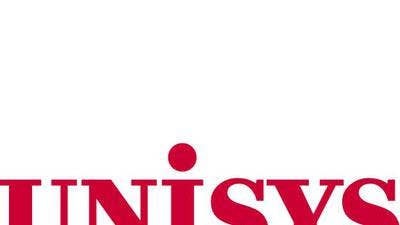
Unisys
The Unisys of today, including the Unisys name, officially launched in 1986. But like other IT industry companies, the company’s history is more complicated and much longer – traceable back to the early 1800s and the firearms manufacturer Remington.
Remington began manufacturing typewriters in 1873, according to a Unisys company history. In 1949 it developed the Remington Rand 409, the world’s first business computer. And in 1951 it delivered UNIVAC, the first commercial mainframe, to the U.S. Census Bureau. (Univac made history in 1952 by predicting the election of Dwight D. Eisenhower as president before the polls closed.)
American Arithmometer Co., meanwhile, was founded in 1886 to manufacture and sell the first commercially viable adding machine invented by William Seward Burroughs. (That company was renamed “Burroughs” in 1904.) And in 1910 Sperry Gyroscope Co. was founded by Elmer Ambrose Sperry to manufacture navigational equipment for ships and aircraft.
Remington Rand and Sperry merged to form Sperry Rand in 1955. Sperry and Burroughs were among a number of companies that competed with IBM in the mainframe computer market through the 1950s, 1960s and 1970s before Sperry and Burroughs merged to form Unisys in 1986.
Unisys today develops and sells its ClearPath mainframes and related software. But the company’s focus is on providing cloud and infrastructure, enterprise computing, business process and digital workplace solutions for business and government customers. The company reported revenue of just over $2 billion in fiscal 2021 and the company is No. 29 on the CRN Solution Provider 500.
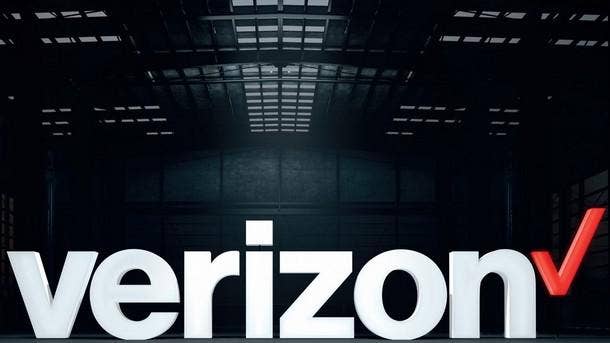
Verizon Communications
Another telecommunications company whose lineage goes back more than a century, the Verizon of today was born in June 2000 through the acquisition of GTE by Bell Atlantic, one of the “Baby Bell” companies created through the breakup of the phone company in the early 1980s. (Bell Atlantic merged with NYNEX, another regional phone company, in 1996.) The Verizon name came from Verizon Wireless, a joint venture with Vodaphone, according to a company history timeline.
Verizon today is a communications technology giant providing business and consumer customers with mobile and landline phone, internet and cable TV services. The company competes head-to-head with AT&T and T-Mobile in the mobile phone arena and offers services that include 5G wireless, video conferencing, internet of things and cybersecurity.
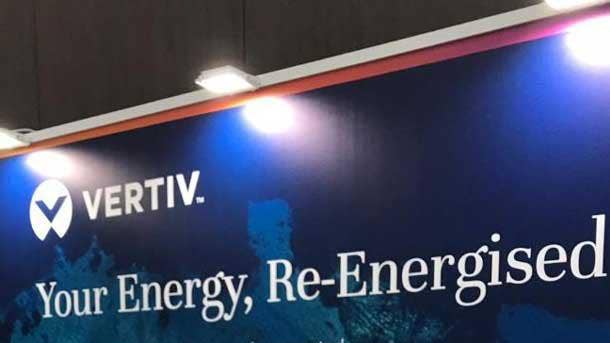
Vertiv
Vertiv’s roots go back more than a century to Emerson Electric Manufacturing Co., which began producing electric motors and fans in St. Louis in 1890.
Emerson established the Emerson Network Power business in 2000 following the acquisitions of ASACO, a provider of power transfer switches, and Liebert Corp., a developer of thermal management and power protection for IT systems, according to a company history. That was followed over the next 10 years by a series of acquisitions in critical infrastructure technologies including Avansys, Marconi, Knurr AG, Avocent, Chloride and the power system business of Marconi.
In 2016 Platinum Equity acquired the Emerson Network Power business for more than $4 billion and renamed it Vertiv. The company’s product and service offerings today span critical power management, thermal management, racks and enclosures, and infrastructure and device management and monitoring.
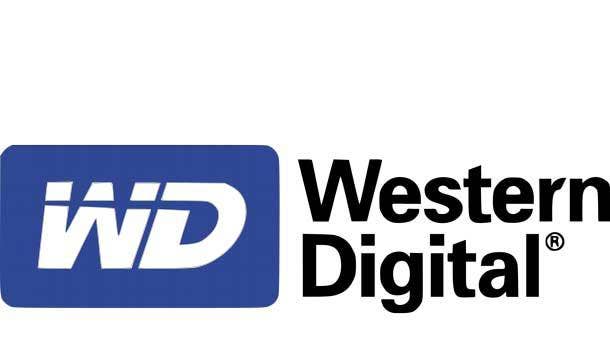
Western Digital
Founded in 1970, Western Digital originally manufactured transistor test equipment, but quickly became a leading producer of specialty semiconductors used in calculators. From there the company began developing floppy and hard disk drive controller chips – including providing IBM with controllers for its PC/AT, according to a company history.
While the company sought to become a general OEM hardware supplier for the PC industry through the 1980s, it had its most success with storage-related chips and disk controllers, according to Wikipedia. The big change came in 1988 when it bought the hard drive production assets of PC hardware maker Tandon and hard disk drives became the company’s focus, competing with Seagate and Quantum. The company acquired Hitachi’s storage business unit in 2012 for $4.3 billion and SanDisk in 2016 for $19 billion.
Western Digital today is a leading supplier of hard drives and solid-state drives for computing devices, as well as USB drives and flash memory cards.
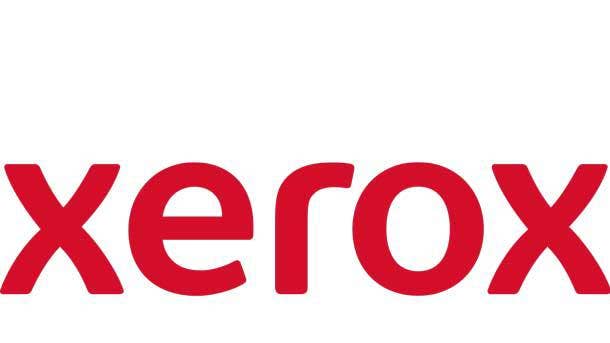
Xerox
Xerox puts the company’s start in 1906 when the M.H. Kuhn Company (founded in 1903) became the Haloid Company in Rochester, N.Y. to manufacture and sell photographic paper, according to a company history. In 1935 Haloid bought Rectigraph Co., a photocopying machine manufacturer that used Haloid paper. And in 1947 the company obtained the commercial rights to xerography, an imaging process (originally called electrophotography) invented by Chester Carlson, according to Britannica.
The company was renamed the Xerox Haloid Company in 1958 and one year later introduced the 914 xerographic copier, which made photographic copies on plain, uncoated paper. The company’s named was changed to Xerox in 1961.
Over the last 50 years Xerox, with its Xerox PARC research lab, has developed word processing machines, laser printers, and even created Ethernet, the office communications network. But the company’s focus has remained on developing and selling print and digital document products and services, including print management software and the DocuShare content management platform.